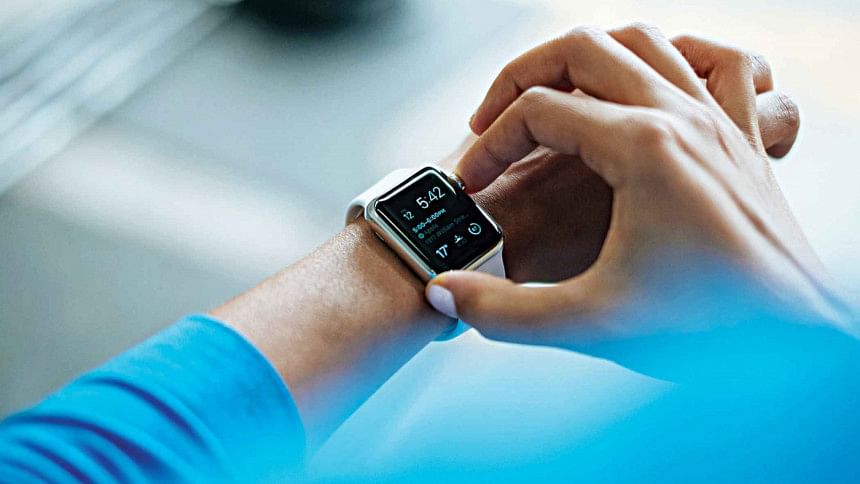Tech megatrends in the last decade we need to look out for

Klaus Schwab, founder and executive chairman of World Economic Forum asserts that we're in the middle of a fourth industrial revolution and it will become known as the digital revolution. It is hard for common people to yet understand and appreciate or fear the extent to which technology has penetrated our modern life. Through an almost uninterrupted and imperceptible process, machines, inventions and technology has become an integral part of the life of the 21st-century citizen. Currently, we are in the middle of a storm of unfathomably rapidly rising technological megatrends and all our lives and society and civilization will be inevitably shaped by these trends. The biggest digital trends that are driving the unstoppable advancement of technology include Artificial Intelligence, The Internet of Things (IoT), automation in production and manufacturing, 5G data, Edge Computing, Quantum Computing, Edtech, Cryptocurrency, Bitcoin, Cyber Security, Virtual Banking, Gaming tech, Extended Reality etc.
ARTIFICIAL INTELLIGENCE AND PREDICTIVE LEARNING
Artificial Intelligence is essentially the science of teaching machines to imitate the human brain. It is based on a machine's ability to analyse data contextually, recognize patterns of knowledge, arrive at logical decisions based on the analysis and trigger events following the conclusion. Prominent examples of AI systems that aim at accomplishing these goals include Machine Learning, Deep Neural Networks, Natural Language Processing, Computer Vision systems, Cognitive Search systems etc. Trained on extensively large datasets, these AI programs can function through very heavy computational power that spares human beings from going through tasks that involve the four Ds- dull, dirty, dangerous, dear. It limits the necessity of human intervention for mundane work.
Predictive Learning is one of the principal tools in machine learning. In this programme, the system models its environment and tries out different actions under varying circumstances. It records the consequences these actions have and uses this knowledge to make further decisions. It is one of the key buzzwords in the current world of AI and one of the more favoured ways of training machines to think like its human makers.
The future of technology is based on Quantum Computing which uses the full strength of Artificial Intelligence. When it arrives in its full glory, Quantum Computing will provide answers to the most difficult, persistent and enduring of problems that have plagued human society for millennia. At present, there's no sector of serious human exploration that remains untouched by AI. At least some form of Artificial Intelligence has started to influence the economy, global markets and commerce, governance, education, agriculture, military, finance, cybersecurity, manufacturing, transportation, media and the entertainment industry, scientific experimentations and study, deep space exploration. Now AI is also venturing into the creative worlds. There are machines to challenge grandmasters on chess or paint masterpieces or even anticipate your mood to make you a suitable playlist. As we plunge headfirst into a new era of intricate technology, Artificial Intelligence will surely stand at the forefront of all further advancements.
Automation in Production
The automation of production is moving forward like an unstoppable freight train. This seemingly unstoppable process can be perceived both in frightening and blissful terms. Automation in manufacturing refers to the ability of production to be continued with minimal human participation. It is the digitisation of the production process. Thanks to the involvement of AI and massive computational power in almost all the industries, the more repetitive, dull and physical labour-consuming parts of production can be carried out without human involvement. Machines are taught to take care of the parts of the manufacturing process that goes on without any variation and doesn't require critical, creative decision making or problem-solving. This rapid intervention of automation in the production industries quickens up the speed manifolds and makes manufacturing incredibly more efficient. It leaves out the limitations of human capabilities out the production process and invites more creative thought and ground-breaking innovation.
The consistently rising automation in production can be traced in its roots to the 'Fourth Industrial Revolution', better known as Industry 4.0. Originating in Germany, Industry 4.0 has come to encompass a vast industry of production and manufacturing under the heavy use of automated equipment. It combines the power of Artificial Intelligence with the ever more prominent presence of the Industrial Internet of Things which aims to connect all sections of the production process under one automatically functional chain of events.
The current trend of automation of production can be broken down into three subdivisions: fixed, programmed or flexible automation. Fixed automation is attached to large volume, single-part production. It is generally known as hard automation and the programming is specified to particular equipment in the production process. In the case of changeovers, technicians usually have to shut down an entire line of production to install manual changeovers. In the case of programmed automation, batch production is usually the target. It increases the types of parts of products manufactured. However, a certain downtime is required to perform changeovers. Flexible automation provides real-time, on-demand production.

Security
While no part of modern life is outside the influence of technological trends, some matters are far more susceptible to the rise of technology than others. Security falls under this category of events. The blindingly fast civilization is its own curse. As it makes our lives more comfortable, it also invites problems that are more complex, intricate, sophisticated and daunting. Breach of security, both in real life and in case of cybersecurity is such a fast-emerging issue.
Technology offers a vast array of tools and methods to combat this potential breach of our security. In real physical life, the trends have already been set to resolve this issue. Technologies such as facial recognition, voice recognition, biometric access, gunshot detection, video analytics, fingerprint sensors, gesture analysis, retina scans, autonomous locking systems are already firmly in place and are being improved upon every day. The use of autonomous drones adds a new dimension to physical security. According to the Federal Aviation Administration, there have been over 7 million functional drones in the sky of the United States alone in the past year. Using Artificial Intelligence to interpret huge datasets obtained from satellite images is another security trend that's making our borders safer. AI video surveillance is being used to pick up on nuanced threats that would have been lost to the unsuspecting eyes. Finally, the highest assurance in the world of physical real-life security is offered by the connectivity of the Internet of Things.
Cybersecurity holds more importance now than ever before as we get used to the practice of practically uploading our entire lives online. Starting from personal intimate security details such as our credit card numbers and stretching to documents and plans of the highest national priority face the imminent threat of cybercrime today. To battle this menace, newer technologies are relentlessly being invented, perfected and applied. Hardware authentication, user-behaviour analytics, data loss prevention, deep learning, making extended use of the cloud are some of these cybersecurity measures being stressed. All in all, as more threats are presented by the advancement of technology, so are more methods and ways of confronting them and keeping our lives and valuables secure.
For a nation that sways between the dream of becoming a force to be reckoned with on the world stage and the reality of limited resources and a persistent struggle with poverty, keeping up with all the modern technological trends of the world can seem like an absurd notion. But our vision of where we want to stand as a nation is inseparably entangled with how we advance technologically. Our government is acting under the broad banner of 'Vision 2021' and a prominent feature of which is Digital Bangladesh. And though we fall short in almost all aspects of our vision, the technological trends that are taking shape within our society can hardly be ignored. Smartphones and the internet have become a fixture in the scene of our daily lives. We are gradually leaning more and more towards taking care of our business, work, education and entertainment purposes through digitised mediums. Large sectors of financial activities have already been successfully digitised. New startups and established organisations are directing their gaze towards the march of new and latest technological trends. The production industry is undergoing massive changes in terms of being automated. Cybersecurity is starting to be taken as seriously as it ought to be. Young entrepreneurs are well aware of the foreseeable future built upon the power that lurks within artificial intelligence. If we can catch up to the sweeping current of technological megatrends, it will permanently change the way we live our lives and perceive the world surrounding us. Whether this change will be for better or for worse will depend on how we educate our youth and how we represent Big Tech to the ordinary citizen.
The author is a Nuclear Science and Engineering graduate from Military Institute of Science and Technology.

 For all latest news, follow The Daily Star's Google News channel.
For all latest news, follow The Daily Star's Google News channel. 



Comments